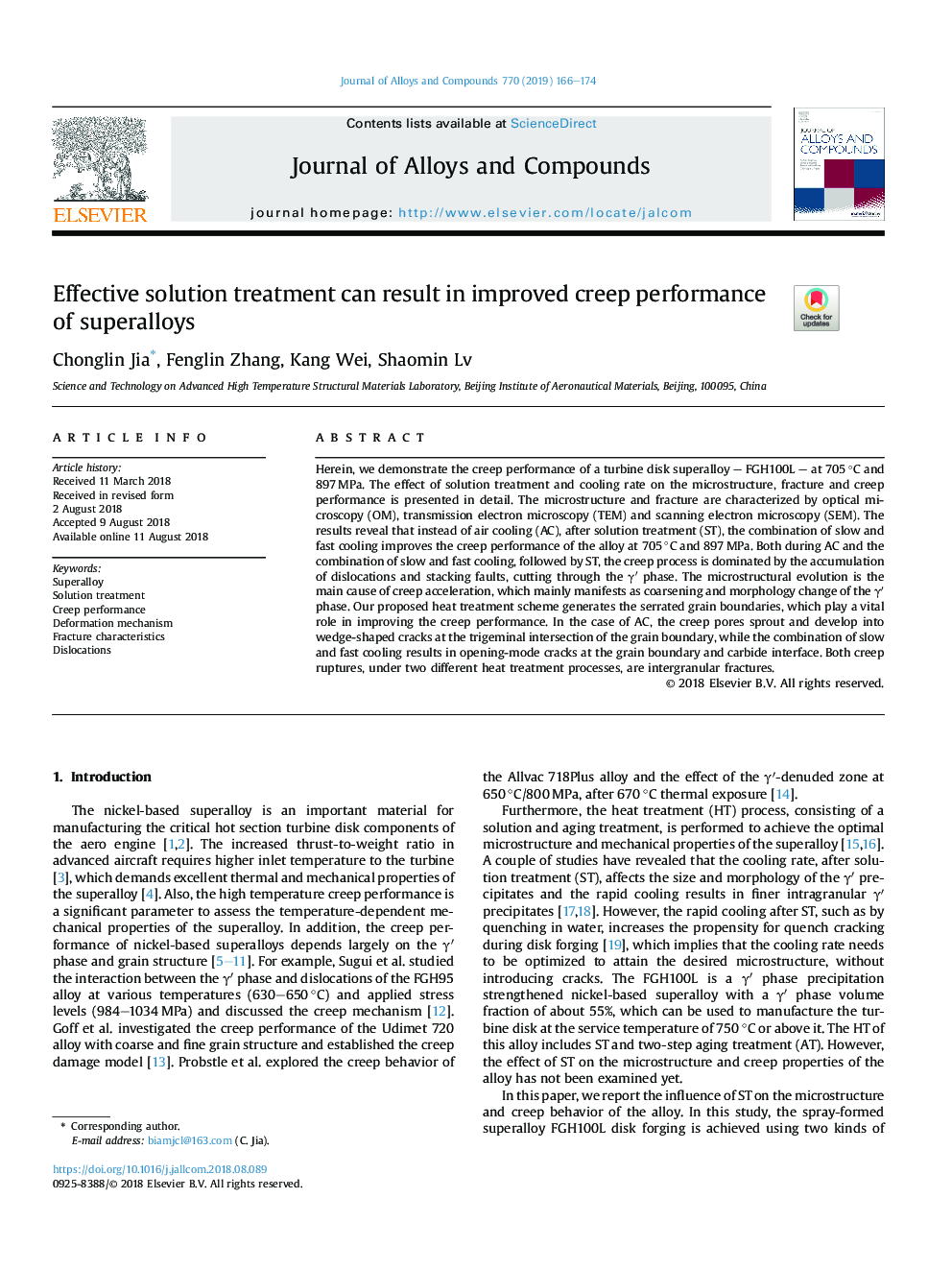| Article ID | Journal | Published Year | Pages | File Type |
|---|---|---|---|---|
| 8943271 | Journal of Alloys and Compounds | 2019 | 9 Pages |
Abstract
Herein, we demonstrate the creep performance of a turbine disk superalloy - FGH100L - at 705â¯Â°C and 897â¯MPa. The effect of solution treatment and cooling rate on the microstructure, fracture and creep performance is presented in detail. The microstructure and fracture are characterized by optical microscopy (OM), transmission electron microscopy (TEM) and scanning electron microscopy (SEM). The results reveal that instead of air cooling (AC), after solution treatment (ST), the combination of slow and fast cooling improves the creep performance of the alloy at 705â¯Â°C and 897â¯MPa. Both during AC and the combination of slow and fast cooling, followed by ST, the creep process is dominated by the accumulation of dislocations and stacking faults, cutting through the γⲠphase. The microstructural evolution is the main cause of creep acceleration, which mainly manifests as coarsening and morphology change of the γⲠphase. Our proposed heat treatment scheme generates the serrated grain boundaries, which play a vital role in improving the creep performance. In the case of AC, the creep pores sprout and develop into wedge-shaped cracks at the trigeminal intersection of the grain boundary, while the combination of slow and fast cooling results in opening-mode cracks at the grain boundary and carbide interface. Both creep ruptures, under two different heat treatment processes, are intergranular fractures.
Keywords
Related Topics
Physical Sciences and Engineering
Materials Science
Metals and Alloys
Authors
Chonglin Jia, Fenglin Zhang, Kang Wei, Shaomin Lv,
